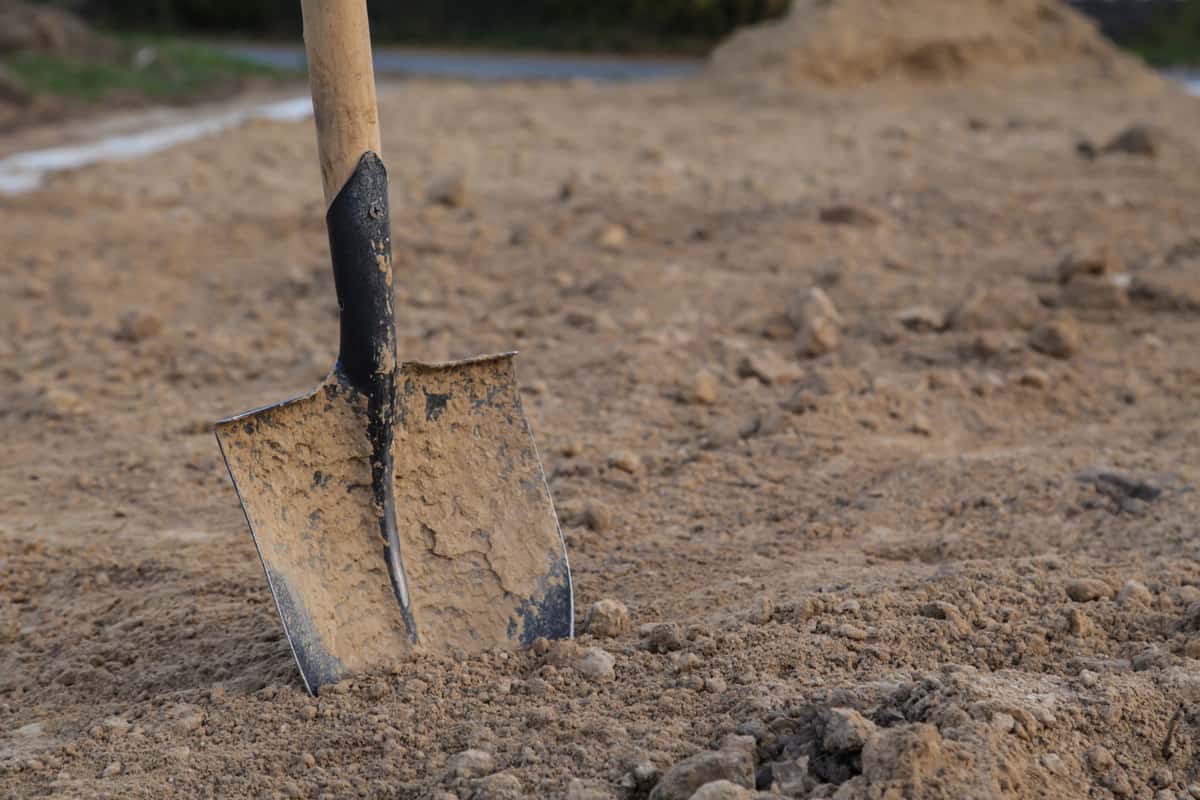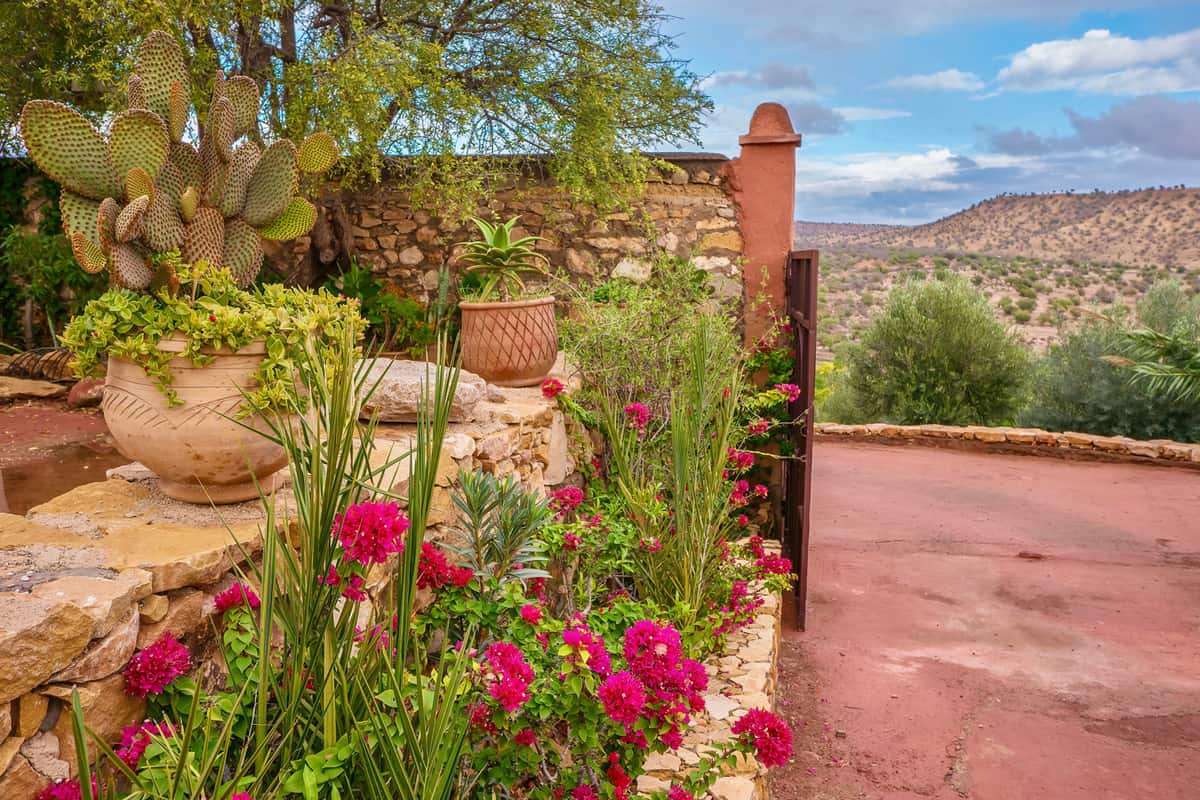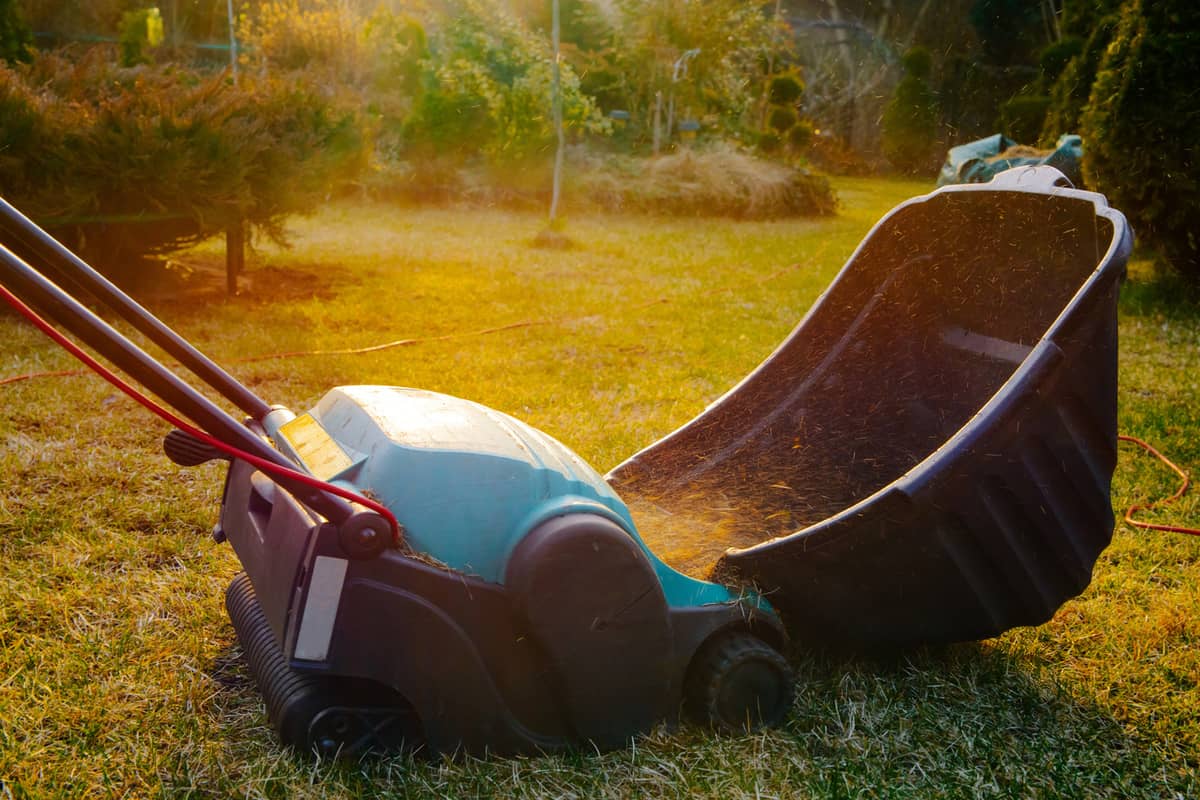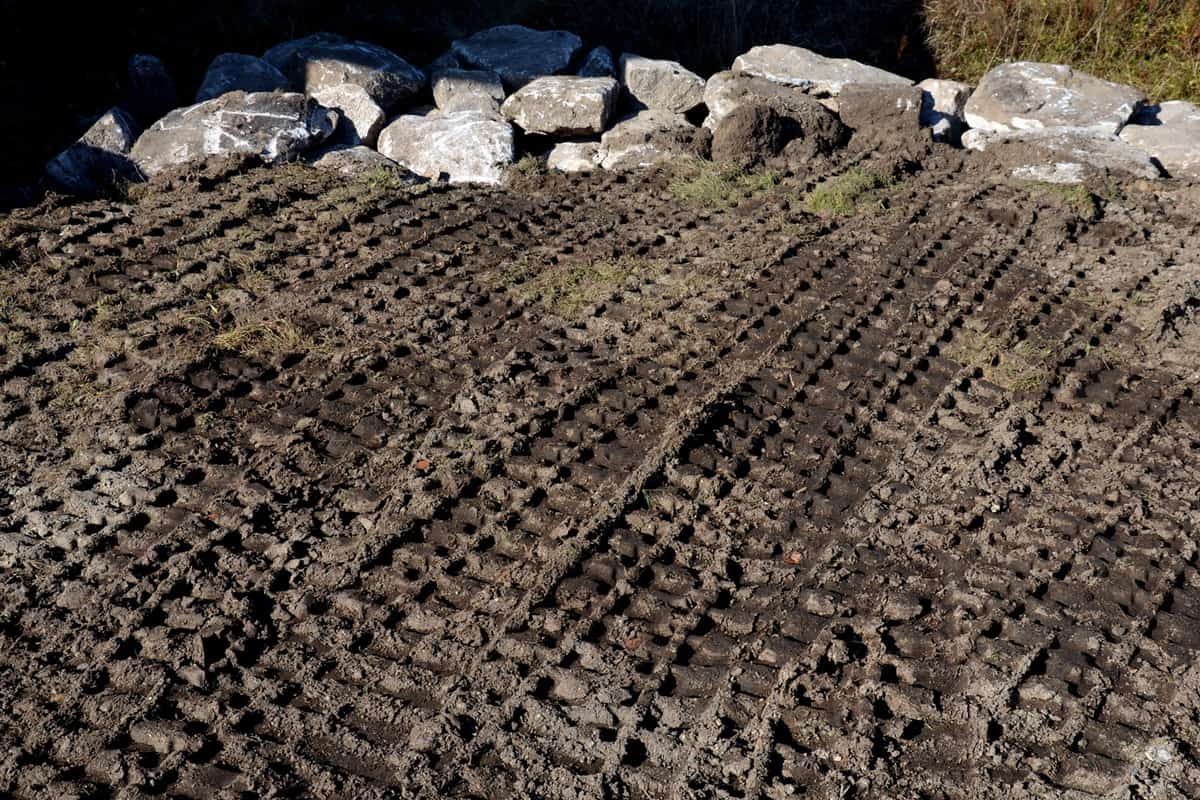Getting to know and understand the ground in your garden can feel impossible at times. Do you live somewhere with clay soil and don't know whether you can compact it or not? Well, we've done extensive research into this topic and have the answer here for you. Let's check it out below!
Yes, you can compact clay soil, although the ground will do this naturally. Generally, clay soil will compact as it becomes wet, so if it recently rained or you watered your plants, you may have done this without knowing.
However, if your clay isn't compacted, you can do this yourself by applying pressure to the ground with a roller, hoe, or rammer.
As we begin, we will cover all things clay soil and discuss how to compact it. Whether you're new to this ground type or want to give your garden some much-needed TLC, we're here to help. With that said, let's dive right into this post!
![Soil background - Can Clay Soil Be Compacted [And How To]](https://gardentabs.com/wp-content/uploads/2022/04/Soil-background-Can-Clay-Soil-Be-Compacted-And-How-To.png)
What Does It Mean When Soil Is Compacted?

When soil becomes compacted, its particles are pressed tightly together. This will reduce the overall amount of pore space between them.
Generally, thicker soils, like clay, are naturally compacted through rainfall or any other moisture, hence why gardening in them can be difficult.
The heavily compacted soil will often have a few large pores that drain water. These pores won't be able to handle much moisture, often explaining why your yard floods so easily.
According to the University of Minnesota Extension, heavily compacted soils will have a reduced rate of both water infiltration and drainage. That can become a problem for your plants, so too much compaction isn't a good thing.
How Do I Know If My Soil Is Compacted?
If you think your clay soil may already be compacted, there are some signs to look out for. These typically include:
- Pooling or puddling in lower areas of your yard.
- Water running off of high points in your garden.
- Bare spots in your yard that won't grow.
- Sections of ground that are too hard to shovel/trowel.
- Stunted plant growth.
- Shallow tree rooting.
Of course, these are just the main symptoms of an over-compacted yard, so keep an eye out. Most commonly, flooding will happen if the ground doesn't have enough pores to drain water, so try to break things up.
Plants need drainage to survive, so if the clay in your garden is too compacted, you could have a problem growing/maintaining them.
Do You Need To Compact Clay Soil?
Most times, you don't need to manually compact clay soil. Considering it will do this naturally over time, adding to its overall compaction can harm your plants.
As we covered, compaction essentially reduces the number of pores the ground has. Your yard needs to have plenty of pores to drain excess water, or flooding will happen.
However, if the clay in your yard is too loose, you could have sliding and root development issues. That is when compacting it would be beneficial, so it's not always a bad thing.
How Do You Compact Soil?
The basics of compacting soil are applying pressure to it. Typically, you can do this by using a roller, hoe, or rammer for your clay.
A roller will look like a drum aerator, minus the spikes. You can also use a standard garden hoe to compact clay soil, so this may be the best option if you don't want to purchase a new tool.
Furthermore, a rammer can do a nice job of compacting clay. However, a rammer is more for construction jobs, so it isn't always easy to use. We think a roller or hoe will be the most user-friendly of the three.
Regardless, you want to make sure you apply as much pressure to the ground as possible. Repeat this multiple times until the area you're working on is flat and tightly compacted.
Once you finish, test the soil by pouring water on it. If the water rolls off or pools, the clay is compacted.
ARNOT Heavy-Duty Lawn Roller
This heavy-duty lawn roller holds 16 pounds, is made of steel, works in tight spaces, and comes with a satisfaction guarantee.
Why Is My Clay Soil Soft?

If your clay soil feels too soft, this could be because it is fresh. Generally, newly laid clay soil will take a few months to settle and harden, which is an example of when compacting is good.
Furthermore, if your clay is on the loamier side, the organic matter in it could be causing it to feel mushy. The best way to improve this is to add sand. Using sand to fill in your clay ground's pores can help it become firmer.
Additionally, you want to use one of our suggested tools from above to compact the soil once you add sand, to pack it tightly together.
However, you don't want to go overboard, as some drainage is needed for plants to grow.
Should Clay Soil Feel Heavy?
Generally, clay soil won't feel much harder than any other type. Although not physically more demanding than different ground types, clay soil can feel thicker/heavier if it is wet or compacted.
The natural stickiness of clay ground can make working with it harder. According to AgroConection, clay's stickiness can make it resistant to spade or tiller, ultimately extremely hard to till.
Figuring that the particles in clay soil are much finer than loamier options, this can be to blame for its texture. The particles will clump together, making the ground feel harder and "heavier" than it is.
Unfortunately, this isn't changeable, as clay soil will always be this way. You can try adding fine sand to the clay to break it up but don't expect it to feel like loamy ground.
Will Grass Grow In Compacted Soil?
Most times, grass won't do well in compacted soil. Considering that grass needs plenty of drainage, overly compacted clay gardens can wreak havoc on your greenery.
Ideally, you want to grow your grass in loose soil, meaning clay may not be the best environment. As we covered earlier, not all plants can handle clay, especially grass.
However, if the grass seed you choose has shallow roots, it may be able to thrive in compacted clay ground. This will come down to how often you aerate, water, and care for your lawn.
Specifically, buffalograss, zoysia, tall fescue, Bermuda grass, and perennial ryegrass will all do well in compacted clay soil, so try to stick with those.
Scotts Turf Builder Bermuda Grass Seed
This bag of Bermuda grass seeds is ten pounds, promises to create a thick lawn, contains a WaterSmart PLUS coating that absorbs twice the amount of water as a regular seed, and comes in various sizes/bundles.
How Often Should You Aerate Clay Soil?

If you have heavy clay soil that sees a lot of traffic, you want to aerate it once a year. However, if your Clay garden is on the sandier side and everything is growing well, you can cut it down to every 2-3 years.
Generally, aerating a lawn will help break up the ground. Doing this will create more holes for water to drain, which can become necessary for heavily compacted clay.
The best practice for clay soil is to be mindful of its draining ability. If your lawn floods often and has patches of dead grass/plants, it is probably time to aerate.
On the other hand, if everything looks lush and you rarely have water pooling or flooding your yard, don't disturb the peace by bringing out an aerator.
Can You Over Aerate Clay Soil?
Yes, it is possible to overdo your clay aerating. Regardless of soil type, you create punctures into the ground's surface when you aerate.
Although this can be helpful for overly compacted soil, aerating too frequently can lead to the ground not absorbing the right amount of nutrients and water.
This can cause your plants to become stunted or, even worse, die. So if you have recently aerated (within the past 12 months), try to hold off.
Do Plants Like Compacted Clay Soil?

No, most plants will not like compacted clay soil. Clay, in general, is already hard to grow plants in, so having it be too compact can negatively affect your garden.
Figuring that most plant species need to have properly draining soil beneath them, over compacting your clay can cause them to drown. Root rot is one of the leading causes of death for many plants, so keep the ground somewhat soft if you want a lush green yard.
To Wrap Things Up
Whether you recently moved somewhere with clay soil or want to start gardening, figuring out the basics of caring for clay can be confusing. Although you don't always need to do this, you can compact clay ground from what we found.
Clay soil will compact naturally over time, so manually doing this can cause your soil to become too hard. That can be a major problem for plants, as they won't be able to drain correctly.
Regardless, keep an eye on your clay for waterlogging, and don't be afraid to break it up with some sand!
Made it to the end? Check out these helpful related garden posts below!
How To Keep Clay Soil From Cracking [3 Methods To Know]


